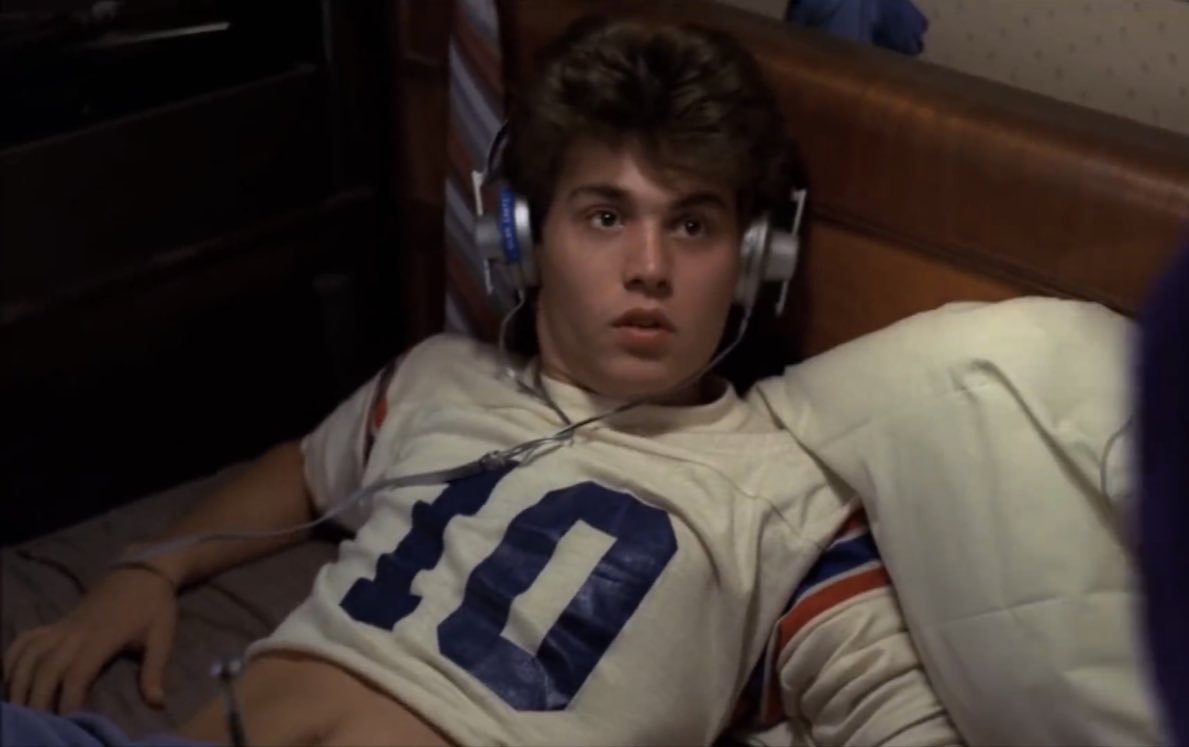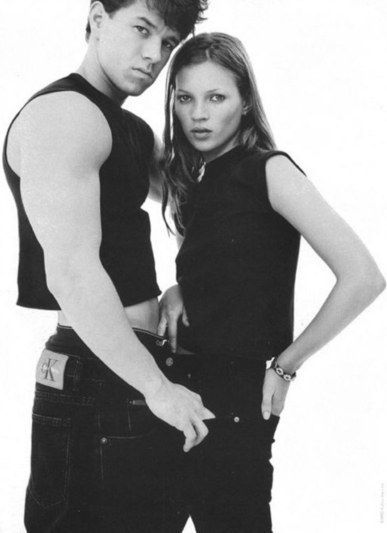In among all the #couplegoals engagement pics from your old school friends and endless meme shitposts, there are some interesting things left on the timeline. Throughout Pride season for instance, there was a mini revival of the crop top, pushed by fast-fashion retailers alongside short shorts and everything glitter. As one such advert from ASOS appears on my screen featuring a male model wearing a neon green crop top , my finger hovers over the comments button. I already know I don’t want to read them. I know they will annoy me and ruin my mood, but my self-control is abysmal. “Remember when ASOS had clothes for straight men?” said one commenter. “That moment when no female models are available,” said another. These were the polite ones. The rest was a cesspit of misogyny, homophobia and transphobia.
The perception that a man wearing a crop top must be gay, in the closet or at the very least feminine is almost ironic given that the garment’s birth is actually credited to one of the most hyper-masculine activities of all time, American football.
In what sounds like the start of a cringey gay porn film, football jerseys were constantly being torn and ripped during matches, exposing player’s torsos and abs. This accidental exposure then gave rise to a trend in the early 80s of players deliberately cutting their jersey tops in order to show off their chiseled bodies. As Professor Vicki Karaminas from the School of Design at Massey University in New Zealand explains, “The midriff cut extended their silhouette and enhanced the size of their torso and muscles. It was a very masculine gesture, or look.” Athletes were working hard and they wanted people to know it. Around the same time, bans on being bare-chested in gyms led to weight-lifters also wearing crop tops in order to still show off their physique. It wasn’t long before brands such as Nike picked up on this and began designing and marketing men’s crop tops for that very purpose.

Athletes weren’t the only one’s wearing the look. In the 1982 film Rocky III, Carl Weathers sports a fitted cropped, sleeveless T-shirt in blue. In the 1984 horror classic A Nightmare on Elm Street, a young Johnny Depp makes his cinematic debut lounging on a bed in a cropped Number 10 football jersey. The trend even continued into the 90s with Will Smith occasionally donning a cropped baggy football jersey during his 6-year reign as The Fresh Prince of Bel-Air, while the unfortunate image of Adam Sandler wearing a cropped MIT top in 1994’s Airheads has been seared into my memory.
The 80s and early 90s crop top was deeply connected with sports, athleticism and masculinity. A show-boating of the male physique and the work done to achieve it. So what happened? What caused straight men to reject the garment, seeing it as effeminate, maybe even queer?
As much as I would love to credit the death of straight men wearing crop tops to Adam Sandler, in truth the trend died because of an ongoing problem within society. A problem that still exists today and holds some of the most powerful offices in the world. Fragile masculinity.
In the late 80s the image of the crop top had already began to change. Trailblazing, androgynous artist Prince was one of the first to wear the crop top in a way that didn’t reference sportswear, wearing a tight, high-cropped black top that showed off his impeccable torso while performing at Wembley in 1986. In the 90s the image of the top turned more towards fashion and sex as Calvin Klein’s iconic androgynous 90s’ adverts starring Kate Moss also featured a muscular, crop top-wearing Mark Wahlberg. Similarly, underwear brands such as NIKOS were marketing the garment in a sexual, sometimes homoerotic, manner presenting models like Greek Gods.

It was this re-branding that led to the trends demise. As the 90s gave way to the 00s the advent of Don’t Ask Don’t Tell and the brutal murder of young gay man Matthew Shepard betrayed a culture of closeted identity, homophobia and harassment. In the UK, Thatcher introduced Section 28, a new law which banned the “promotion” of homosexuality in British schools, leaving a whole generation of LGBTQ people growing up without adequate education on an important facet of their identity. “Post-AIDS there was this backlash of straight men not wanting to be perceived as gay” argues Dr Shaun Cole, Associate Professor in Fashion at Winchester School of Art. “Fashion, as well, has traditionally been derided as frivolous and feminine.”
The men’s crop top, now less about athleticism and more about fashion, sex and androgyny, started to embody all the things masculinity wanted to distance itself from: camp, queerness and effeminacy. Straight, closeted and even out men disregarded the trend, instead replacing it with ill-fitting trousers and distasteful tank tops (the 00s was an odd time). The last celebrity male midriff in public for a while was Ginuwine’s extreme cropped blazer and no shirt look for the 2000 Radio Music Awards. An awkward end to a beautifully chiselled legacy.
Not all men shunned the crop top, however. Some openly queer men, uninhibited by the fear of appearing effeminate, bravely continued to show off their midriffs throughout the decade. As a result, the crop top has grown to become a staple of Pride season.
Nonetheless, within the last 10 years it seemed like something had changed and straight men were slowly starting to catch up. Jaden Smith, 20 years after his dad sported them on The Fresh Prince, posted a picture to Instagram wearing a black cropped T-shirt. Kid Cudi did his entire 2014 Coachella set wearing a baggy, red crop top and blue shorts, while NFL player Ezekiel Elliott paid tribute to Prince at the 2016 NFL Draft. Journalists and fashion bloggers were quick to label this the resurrection of the male crop top. But was this actually the case?
When Kid Cudi walked out onto the Coachella stage in 2014 with his midriff bared, he did so at a festival known for its unconventional, slightly controversial outfits. Ezekiel Elliott’s tribute to Prince was more about protesting the NCAA’s ban on rolling up T-shirts than it was about the crop top itself. When Zac Efron wore one in the 2016 film Dirty Grandpa and Will Ferrell on SNL in 2011, both did so for the comedic value. Straight men in the public eye may have started wearing crop tops again but it still hasn’t been normalised. It’s something worn to shock, or as a gag, played for laughs. The crop top, like a lot of clothing, still very much carries the burden of gender and sexuality.
However, Professor Vicki Karaminas still has hope. “Gender has become a lot more fluid as Gen Z and millennials are experimenting more with gender and fashion and are rethinking their identities through clothing,” she explains. Jaden Smith, with his androgynous and gender-fluid fashion sense is a key example of this. One day he’s seen in a crop top, the next in a black hoody, the next in a dress. Never do any of those items become pieces worn solely to make a statement. “Clothing is no longer simply male or female,” says Dr Karaminas. “But a lot more complex as new gender identities begin to emerge”.
Toxic masculinity obviously still exists, you only have to look at the responses to ASOS’ crop top Instagram post to see that. But things are changing. Whether it be the handful of male celebrities who were ready to explore ‘Camp’ at the 2019 MET Gala or Rapper Young Thug sporting an Alessandro Trincone dress on the album cover for No, My Name is Jeffrey ; a new generation of straight men are re-discovering fashion and clothes separate from the traditional taboos sexuality and gender. This might just be the rise of crop tops 2.0.
